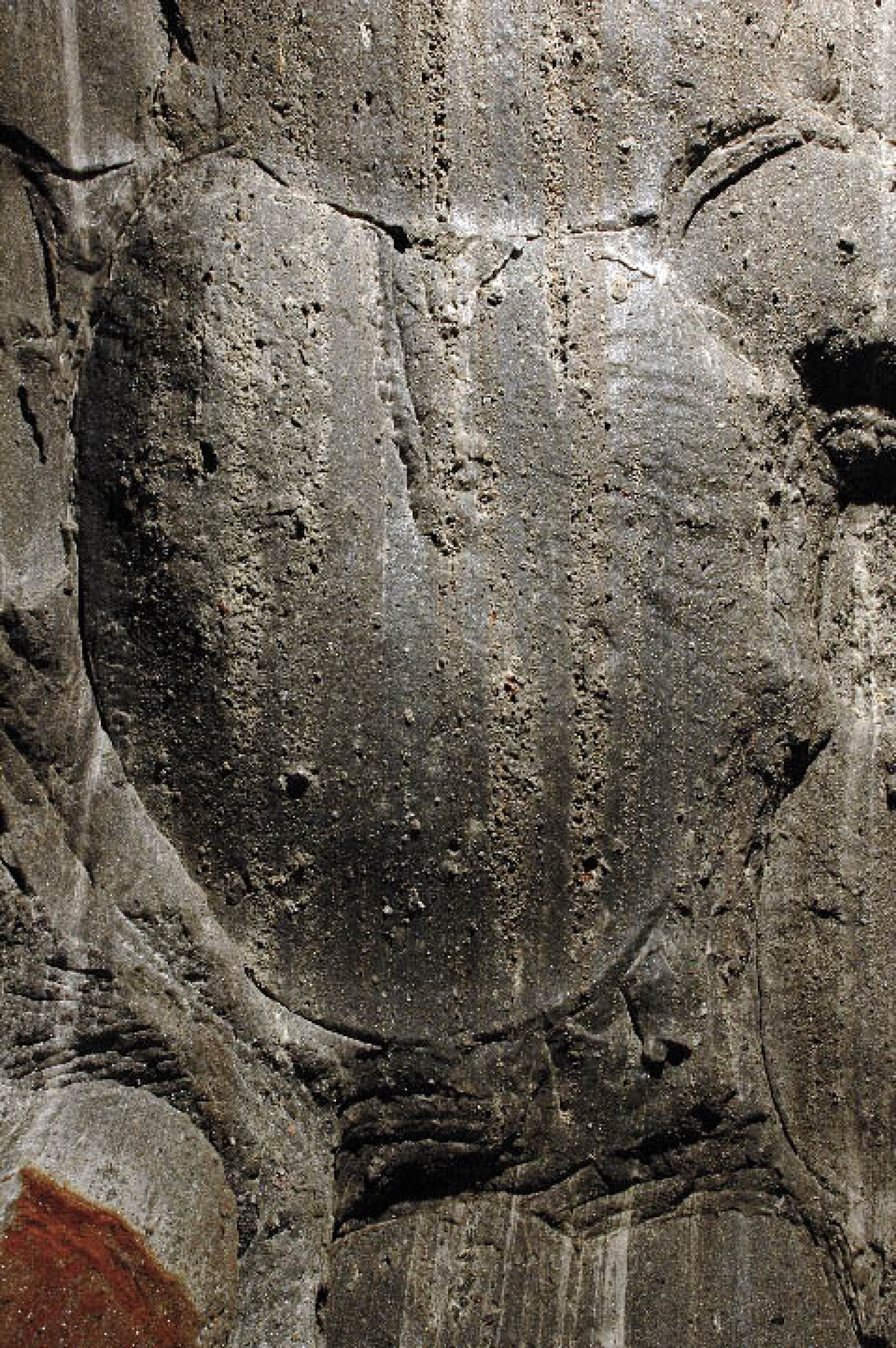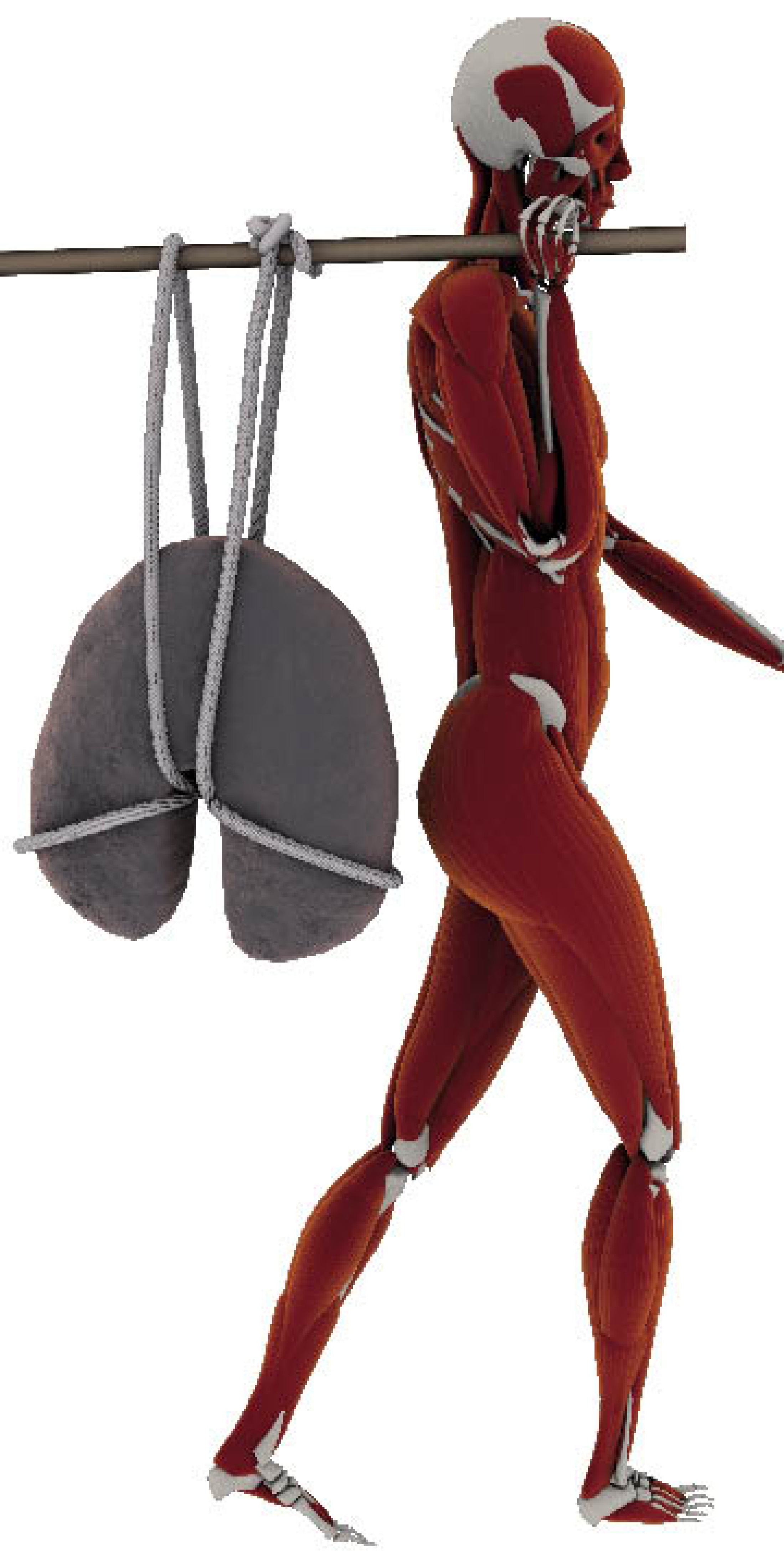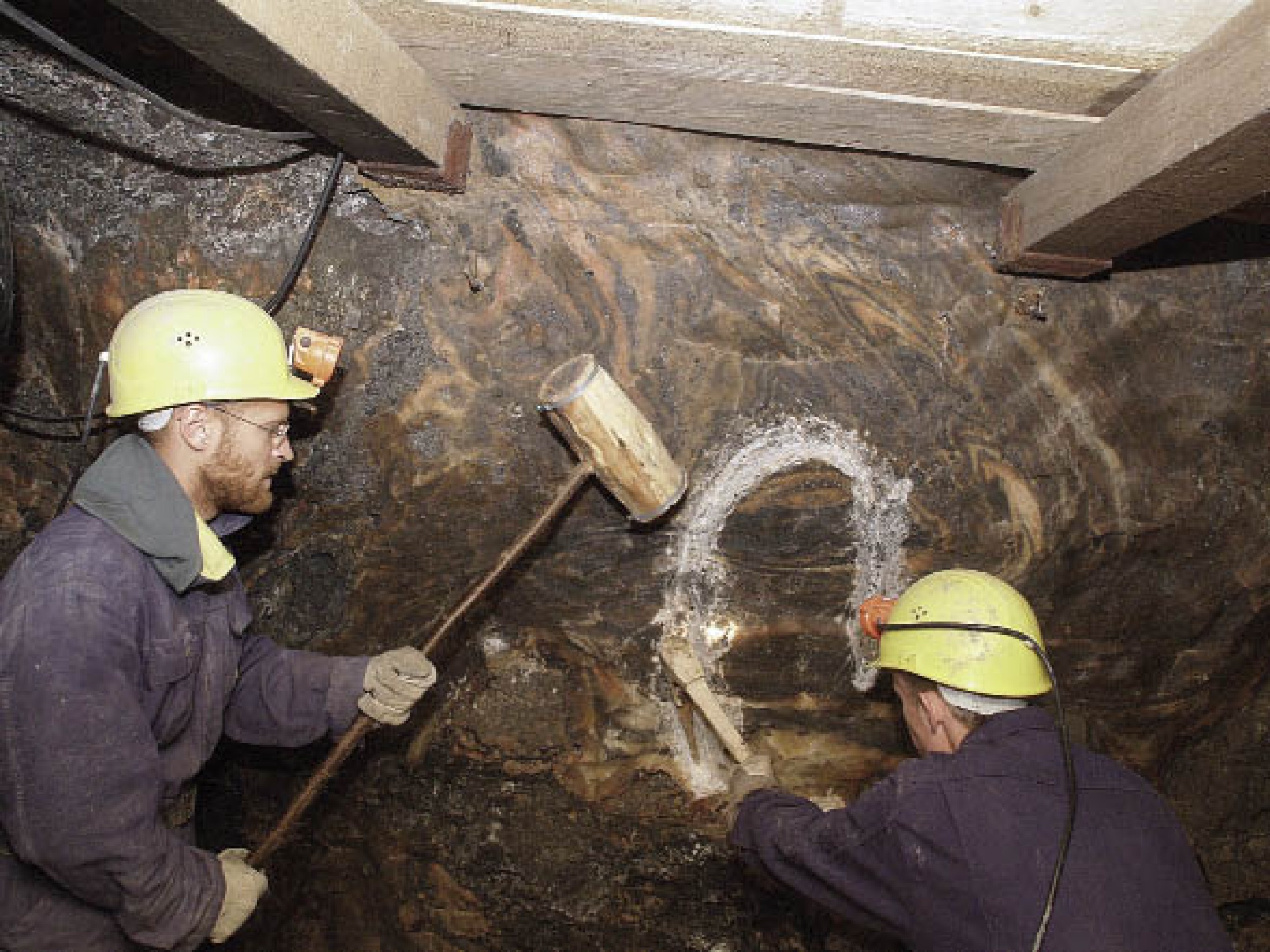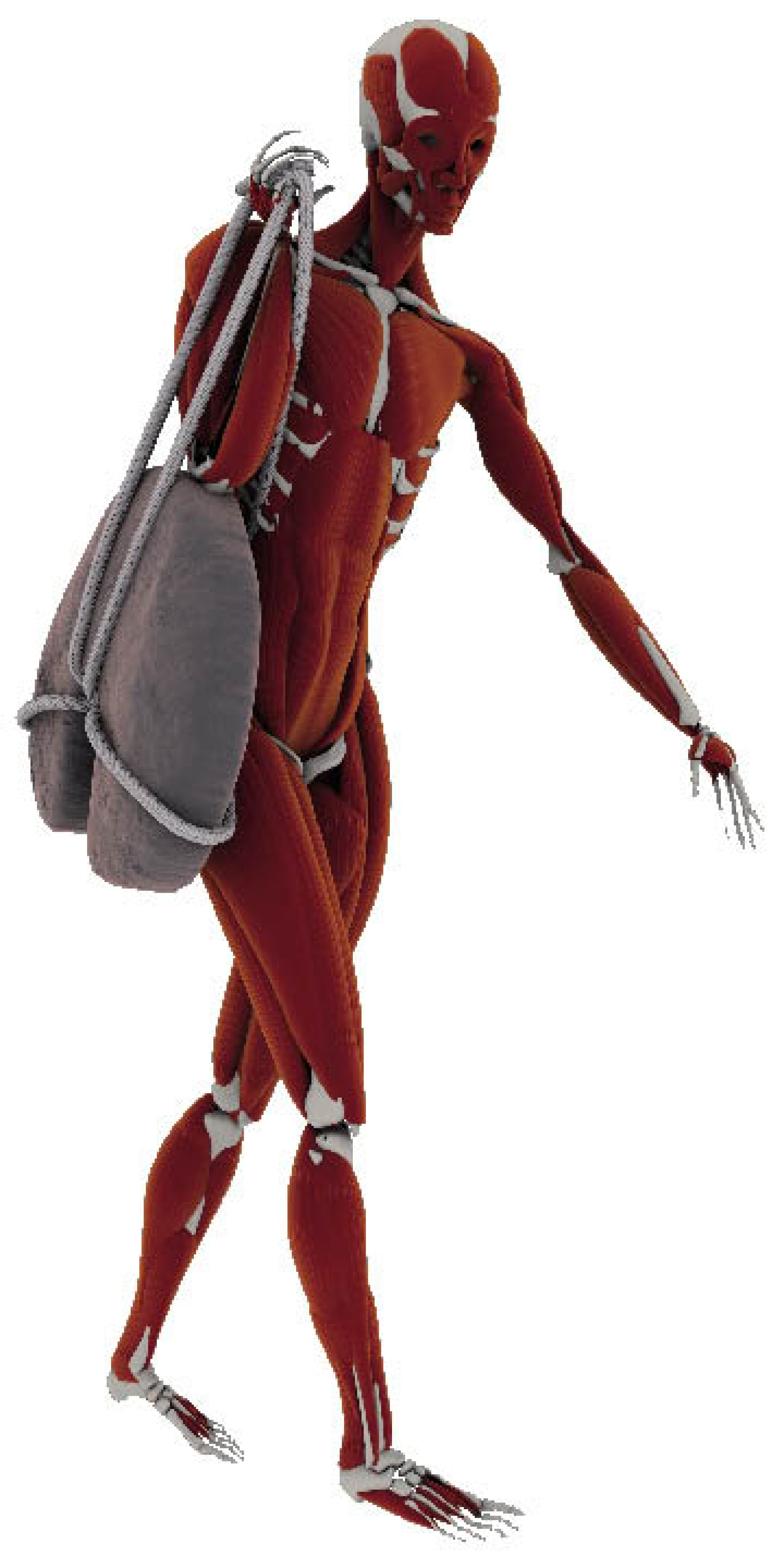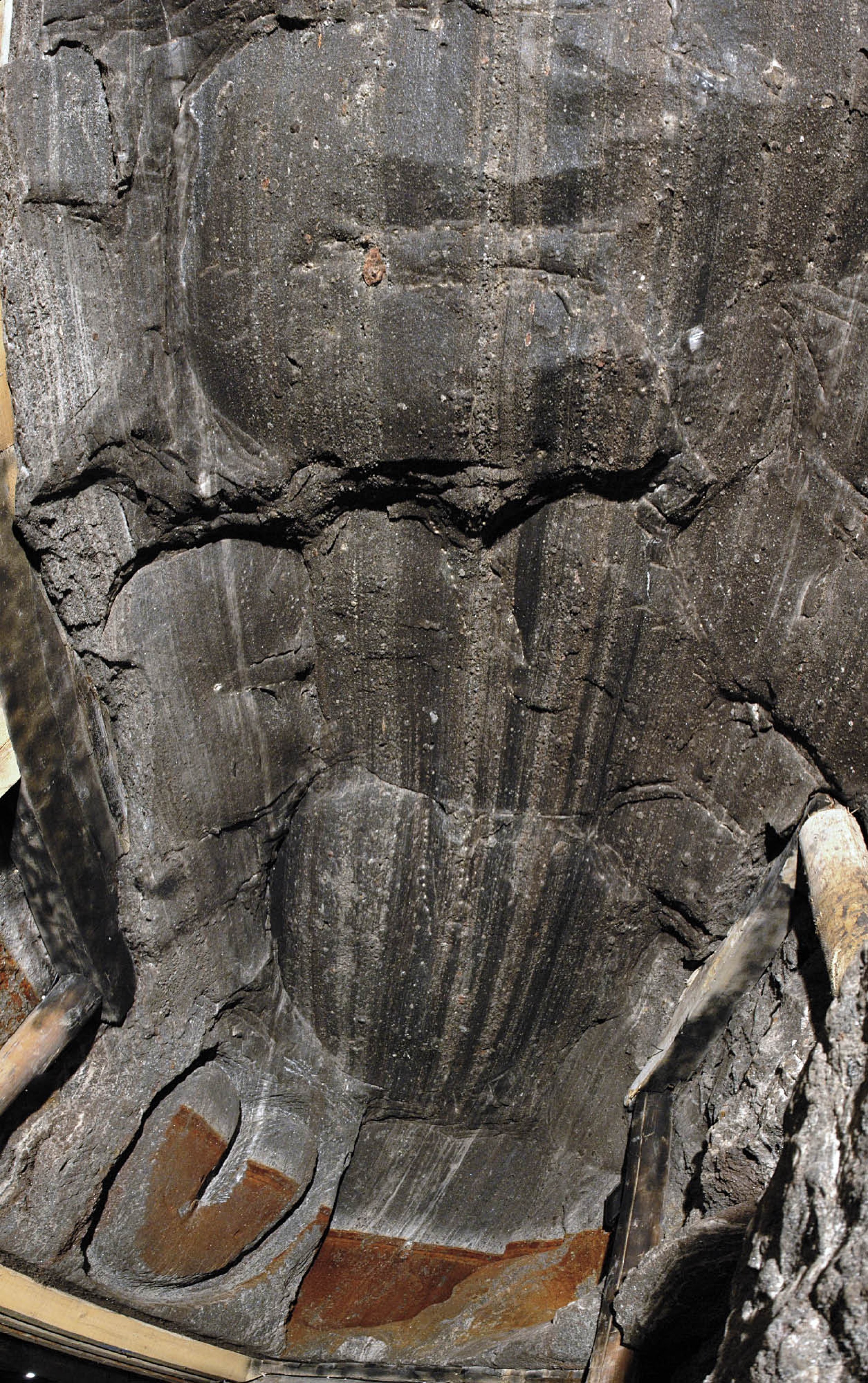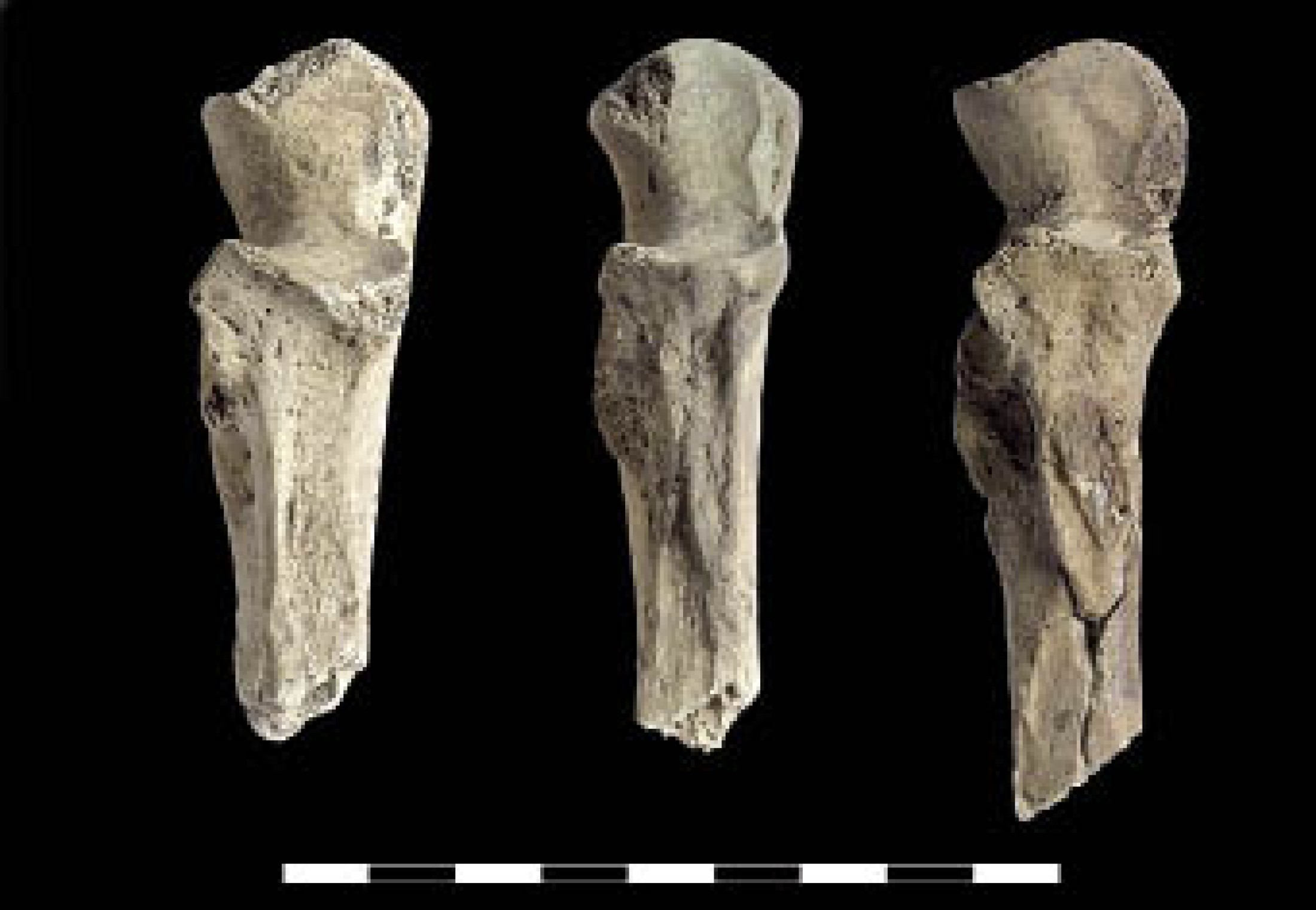Mining methods from the Hallstatt Period – the salt hearts
During the Hallstatt Period salt was extracted from the rock in bars. Small pieces of salt resulting from Bronze Age mining techniques were left on the ground and compacted with waste rock to form the “Heidengebirge”, a combination of rock and mining debris. It is likely that the salt bars were carried out of the mine via sloping tunnels. Anthropological analyses of the burial site in Hallstatt indicate that men were responsible for mining the salt and women were responsible for transporting it.Salt bars
The rocky “Heidengebirge”
Transport technology
Anthropological evidence on organization of work
Salt bars
The method of mining small-grained salt used in the Bronze Age was replaced in the following period by a technique aimed at breaking off large salt plates. Deep, heart-shaped grooves were cut into the solid salt deposit, and the heart halves were then removed, starting from the centre. The negative forms of the removed plates of salt have been particularly well preserved in the Stügerwerk. They are of inestimable value for the reconstruction of the mining technology applied in the Hallstatt period.Until now, two finds of Iron Age salt tablets exist; each of the form of half a heart. But although the explanation seems straight forward so far, there remain some open questions. In modern experiments, it has not been possible to remove large tablets of salt of this size and shape in one piece. The size of the negatives and consequently that of the removed tablets also varies greatly, that is to say, the tablets were not standardized, either by size or by weight. The two known salt plates weigh about 12 kg and 42 kg respectively, and could have been carried out of the mine on someone’s shoulders. There is, however, evidence of blocks of salt of more than 100 kg being removed.
The rocky “Heidengebirge”
It seems that, in contrast to the Bronze Age, the Iron Age miners had no interest at all in small-grained salt, or in utilizing the spalled waste. The gallery floor is in many areas of the Hallstatt period activity formed mainly of small fragments of salt chipped off as the big hearts were being extracted. This material was obviously left behind, and it solidified together with tapers and other material left behind by the miners to eventually form the Iron Age Heidengebirge. Only the large tablets were hoisted out of the mine. This is surprising, considering that the mining waste represents at least one tenth of the mined salt. It corresponds in composition and quality to the tablet salt, and it was precisely this salt that, during the Bronze Age, was traded by the Hallstatt miners.Iron Age Hallstatt is not the only place where salt tablets were broken and the small-grained salt left unused. In Mali, West Africa, only the tablets are taken to the central market in Mopti, although the end user will either have to break them into pieces or dissolve them. But it is of course easier to evaluate the quality of the salt offered in tablet form; finely ground salt packed in sacks would be more difficult to judge.
Transport technology
The move from small chips to large tablets of rock salt necessitated new winching technologies. It would not have been possible to transport tablet salt using the sophisticated Bronze Age carrysacks, nor could they have been hoisted up a vertical shaft by means of ropes and woollen sacks. The salt tablets were presumably carried upwards through inclined shafts. Carrying is the main transporting technology of the Early Iron Age. And this might even have given rise to a new profession. Shoes are among the finds providing information about the carrying activities. They are often not worn out at the heel or toes as usual, but in the arch (the plantar vault), a pattern that can only be caused by consistently climbing ladders or stairs. Interestingly, four of the six known shoes range between sizes 31/32 and 34/35, which would correspond to the shoe sizes of children, juveniles or women.Anthropological evidence on organization of work
Investigations on the skeletons from the contemporaneous cemetery cast some light on these issues. Unilateral degenerative signs caused by carrying heavy loads on one side of the body were found mainly in female skeletons. These findings suggest that loads – salt, pit props, firewood or mine water that needing baling out – were carried by women. The Hallstatt women displayed pronounced stress marks from muscles responsible for flexing the elbow or the forearm, and so involved in the lifting, carrying or pulling of heavy loads. One of these is the brachialis Muscle, attached to the ulna. The stress marks on the upper ends of the right ulna show (from left to right) faint, middle and strong expression of stress. Two ways of carrying are conceivable according to the stress markers: Either heavy loads were carried by one person using a shoulder strap or by two people shouldering a carrying pole.The signs of degeneration found in male skeletons point to heavily stressed muscles in the area of the shoulder girdle, a pattern that might well be caused by working salt with a pick. Even skeletons of children unearthed in the cemetery show signs of degeneration suggestive of heavy labour. Children may have been involved from an early age with simple mining activities, for instance holding and minding tapers.
(Reschreiter, H. – Kowarik, K. – Pany, D. – Loew, C.)

